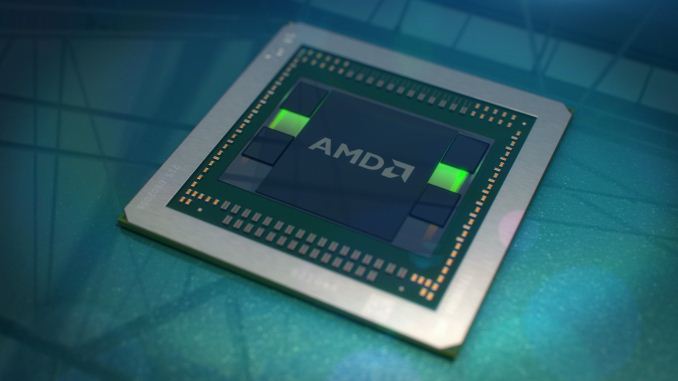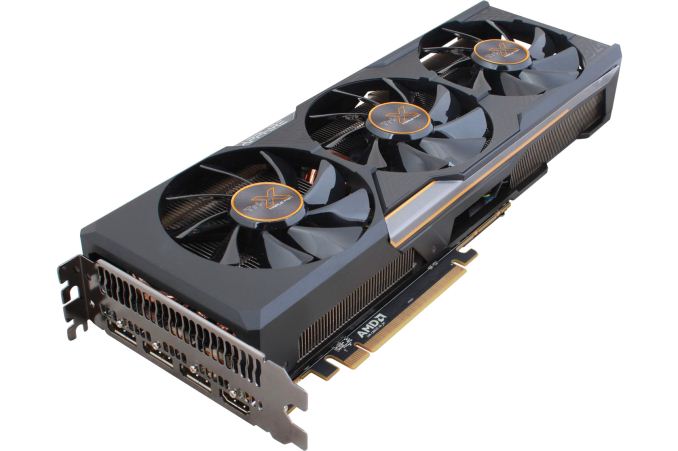The AMD Radeon R9 Fury Review, Feat. Sapphire & ASUS
by Ryan Smith on July 10, 2015 9:00 AM ESTFinal Words
Bringing this video card review to a close, we’ll start off with how the R9 Fury compares to its bigger sibling, the R9 Fury X. Although looking at the bare specifications of the two cards would suggest they’d be fairly far apart in performance, this is not what we have found. Between 4K and 1440p the R9 Fury’s performance deficit is only 7-8%, noticeably less than what we’d expect given the number of disabled CUs.
In fact a significant amount of the performance gap appears to be from the reduction in clockspeed, and not the number of CUs. And while overclocking back to R9 Fury X clockspeeds can’t recover all of the performance, it recovers a lot of it. This implies that Fiji on the whole is overweight on shading/texturing resources, as it’s not greatly impacted by having some of those resources cut off.
Consequently I can see why AMD opted to launch the R9 Fury X and R9 Fury separately, and to withhold the latter’s specifications until now, as this level of performance makes R9 Fury a bit of a spoiler for R9 Fury X. 7-8% makes R9 Fury notably slower than R9 Fury X, but it’s also $100 cheaper, or to turn this argument on its head, the last 10% or so that the R9 Fury X offers comes at quite the price premium. This arguably makes the R9 Fury the better value, and not that we’re complaining, but it does put AMD in an awkward spot.
As for the competition, that’s a bit more of a mixed bag. R9 Fury X had to compete with GTX 980 Ti but couldn’t surpass it, which hurt it and make the GTX the safer buy. On the other hand R9 Fury needs to compete with just the older GTX 980, and while it’s by no means a clean sweep for AMD, it’s a good outcome for AMD. The R9 Fury offers between 8% and 17% better performance than the GTX 980, depending on if we’re looking at 1440p or 4K. I don’t believe the R9 Fury is a great 4K card – if you really want 4K, you really need more rendering power at this time – but even at 1440p this is a solid performance lead.
Along with a performance advantage, the GTX 980 is also better competition for the R9 Fury (and Fiji in general) since the GTX 980 is only available with 4GB of VRAM. This negates the Fiji GPU’s 4GB HBM limit, which is one of the things that held back the R9 Fury X against the GTX 980 Ti. As a result there are fewer factors to consider, and in a straight-up performance shootout with the GTX 980 the R9 Fury is 10% more expensive for 8%+ better performance. This doesn’t make either card a notably better value, but makes the R9 Fury a very reasonable alternative to the GTX 980 on a price/performance basis.
The one area where the R9 Fury struggles however is power efficiency. GTX 980’s power efficiency is practically legendary at this point; R9 Fury’s is not. Even the lower power of our two R9 Fury cards, the ASUS STRIX, can’t come close to GTX 980’s efficiency. And that’s really all there is to that. If energy efficiency doesn’t matter to you then the R9 Fury’s performance is competitive, otherwise GTX 980 is a bit slower, a bit cheaper, and uses a lot less power. That said, AMD’s partners do deserve some credit for keeping their acoustics well under control despite the high power and heat load. It’s not an apples-to-apples comparison against the reference GTX 980 and its blower, but at the very least picking R9 Fury over GTX 980 doesn’t mean you have to pick a loud card as well.
And that brings us to the third aspect of this review, which is comparing the R9 Fury cards from Sapphire and ASUS. Both partners have come to the plate with some very good open air cooled designs, and while it’s a bit unusual for AMD to launch with so few partners, what those partners have put together certainly paint R9 Fury in a positive light.
Picking between the two ends up being a harder task than we expected, in part because of how different they are at times. From a performance perspective the two cards offer very similar performance, with Sapphire’s mild factory overclock giving them only the slightest of edges, which is more or less what we expected.
However the power and acoustics situation is very different. On its own the ASUS STRIX’s acoustics would look good, but compared to the Sapphire Tri-X’s deliciously absurd acoustics it’s the clear runner-up. On the other hand the ASUS card has a clear power efficiency advantage of its own, but I’m not convinced that this isn’t just a byproduct of the ASUS card randomly receiving a better chip. As a result I’m not convinced that this same efficiency advantage exists between all ASUS and Sapphire cards; ASUS’s higher voltage R9 Fury chips have to go somewhere.
In any case, both are solid cards, but if we have to issue a recommendation then it’s hard to argue with the Sapphire Tri-X’s pricing and acoustics right now. It’s the quietest of the R9 Fury cards, and it’s slightly cheaper as well. Otherwise ASUS’s strengths lie more on their included software and their reputation for support than in their outright performance in our benchmark suite.
And with that, we wrap up our review of the second product in AMD’s four Fiji launches. The R9 Fury was the last product with a scheduled launch date, however AMD has previously told us that the R9 Nano will launch this summer, meaning we should expect it in the next couple of months. With a focus on size and efficiency the R9 Nano should be a very different card from the R9 Fury and R9 Fury X, which makes us curious to see just what AMD can pull off when optimizing for efficiency over absolute performance. But that will be a question for another day.












288 Comments
View All Comments
FlushedBubblyJock - Thursday, July 16, 2015 - link
i'VE ALREADY SEEN A DOZEN REFUSE TO BUY FURY BECAUSE OF IT.They have a 4k TV, they say, that requires the hdmi 2.0...
SO ALL YOUR PATHETIC EXCUSES MEAN EXACTLY NOTHING. THOSE WITH 4K READY SCREENS ARE BAILING TO NVIDIA ONLY !
YOU DENYING REALITY WILL ONLY MAKE IT WORSE FOR AMD.
They can screw off longer with enough pinheads blabbering bs.
FlushedBubblyJock - Thursday, July 16, 2015 - link
It's such a massive failure, and so big a fat obtuse lie, it's embarrassing to even bring up, spoiling the party that is fun if you pretend and fantasize enough, and ignore just how evil amd is.hdmi 2.0 - nope ! way to go what a great 4k gaming card ! 4gb ram - suddenly that is more than enough and future proof !
ROFL - ONLY AMD FANBOYS
dave1231 - Saturday, July 11, 2015 - link
That's with HBM? Lol.medi03 - Saturday, July 11, 2015 - link
With all respect, 300 vs 360 watt at load and 72 vs 75 watt idle doesn't deserve "consumes MUCH more power", Ryan, and that even if it wasn't a faster card.Socius - Saturday, July 11, 2015 - link
For total system power draw? Yeah it does....because the power usage gap percentage is lessened by the addition of the system power usage (minus the cards) in the total figure. So if the numbers were 240W vs 300W, for example, that's 25% more power usage. And that's with a 20-30W reduction in power usage by using HBM. So it shows how inefficient the GPU design actually is, even when asking it with HBM power reduction and the addition of total system power draw instead of calculating it by card.mdriftmeyer - Sunday, July 12, 2015 - link
Personally, I have an RM 1000W Corsair Power Supply. Sorry, but if you're using < 850W supply units I suggest you buck up and upgrade.Socius - Sunday, July 12, 2015 - link
I think you replied to the wrong person here. I have 2 PSUs in my PC. A 6-rail 1600W unit and a single rail 1250W unit.Peichen - Saturday, July 11, 2015 - link
The fail that’s AMD’s Fury series makes my MSI Gaming 4G GTX980 looks even better. I only paid $430 for it and it gets to 1490/1504 boosted at stock voltage. Essentially it means I got a card as fast as Fury OC at $100+ cheaper, uses far less power and in my system for months earlier.I am very glad I went Nvidia after 5 year with AMD/ATI graphics and didn’t wait months for Fiji.
FlushedBubblyJock - Thursday, July 16, 2015 - link
There we have it, and it's still the better deal. It's STILL THE BETTER DEAL AND IT'S AVAILABLE.But we're supposed to believe amd is cheap and faster... and just as good in everything else...
I seriously can't think of a single thing amd isn't behind on.
MobiusPizza - Saturday, July 11, 2015 - link
"The R9 Fury will be launching with an MSRP of $549, $100 below the R9 Fury X. This price puts the R9 Fury up against much different completion* than its older sibling; "It's competition not completion